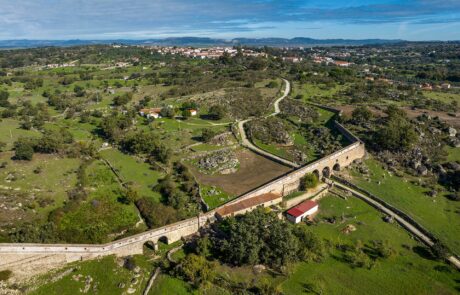Take a step back and take a look at the slope of this monument. Observe how its lower part and its restored upper part can be clearly distinguished.
Walk under its arches and marvel at its height, observe the surrounding landscape and enjoy the amazing view. Continue your walk into town to continue discovering its history and to learn more about the way of life here in the centuries leading up to the present day.
This unique construction is highly memorable and it is well worth immortalizing with your camera!
The base of the aqueduct is made up of several arches. At one time, there were 17 of them with another 20 smaller ones at the top to “make the construction lighter”, this being the raised part of a water conduit that ran from San Pedro de los Majarretes to the so-called “Charca” (Pool). It is made up of granite ashlars and the upper part was rebuilt in the 18th century, its restoration being fully completed by the end of the 19th century. It measures about 170 meters in length and 20 in height.
Although it has long been believed to be a Roman Aqueduct, according to recent research, the origin of the monument can be traced back to the 16th century and the Franciscan Community that lived in the town at that time.









